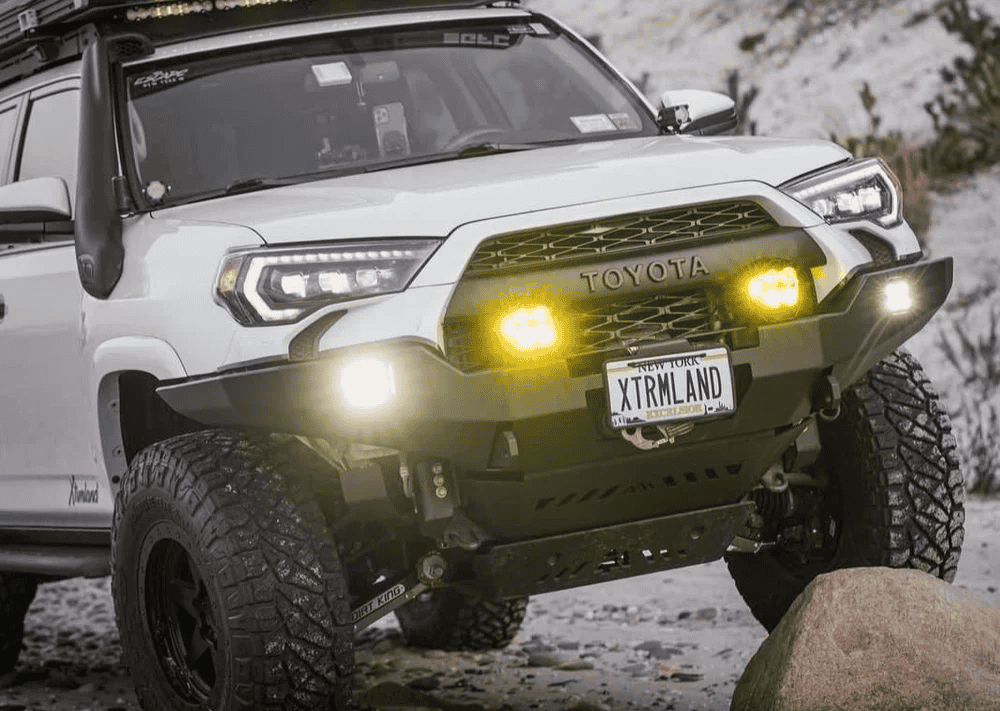Overland Vehicles

Extreme terrain exposes weak links quickly. The path to dependable performance begins with traction, clearance, and precise control. Tire choice defines your contact patch, while suspension geometry and gearing decide whether that traction is usable at crawl speeds. Ground clearance safeguards the underbody from ledges and ruts, and approach, breakover, and departure angles keep bumpers and frames off obstacles.
Large diameter tires increase breakover height and soften impacts, but they change effective gearing. Without recalibrated axle ratios, the engine or motor can feel sluggish and braking distances may grow. A thoughtful pairing of tire size with differential ratios restores torque, throttle response, and engine braking. Locking differentials or selectable limited slip units keep power flowing to the tire with grip, and traction control tuning reduces wheelspin waste on mixed surfaces.
Start with purpose built all terrain or mud terrain tires sized for your axle capacity and intended load. Stiffer sidewalls resist pinch cuts; reinforced beads help at lower pressures. Air down to widen the footprint on sand or slickrock, then air back up for road manners and heat control. Pair tires with wheels that have proper offset to preserve scrub radius and bearing life.
Regear to counter larger rolling diameters and reclaim crawl capability. Match differential ratios to transmission or transfer case behavior for smooth throttle modulation. Add a locking differential for slow technical climbs and a selectable limited slip for mixed ice, mud, and rock. Keep driveshaft angles within safe limits after lifts to avoid vibration and seal wear.
Articulation keeps tires on the ground where they can do work. Use springs and dampers tuned for the actual curb weight plus expected payload. Longer travel must still control body motion, so valve shocks for low speed compression and rebound that tame pitching and side load on off camber lines. Correct geometry with track bar and control arm brackets to restore steering feel and reduce bump steer.
Armor turns a glancing blow into a non event. Skid plates shield the engine oil pan, transmission, transfer case, and fuel tank from sharp edges. Rock sliders carry vehicle weight when a sill grinds against a ledge. High clearance bumpers improve approach and departure while offering solid recovery points that align with frame strength.
Recovery gear is your insurance policy. A correctly rated winch with synthetic line, soft shackles, and a tree strap allows safe, controlled pulls. Add a snatch block for mechanical advantage and a winch line damper for safety. Traction boards bridge short gaps or provide a launch pad from sand and snow. Mount a jack where it is fast to reach and practice with it before you need it.
Electrical planning matters in remote areas. A dual battery or high output alternator supports lights, winch use, and air compressors without starving critical systems. Use fused distribution blocks, sealed connectors, and high quality grounds to minimize voltage drop and corrosion. LED lighting should prioritize usable patterns: wide floods for slow technical driving, a focused spot for sightlines, and compliant beam cutoffs to stay road legal. Add underhood and cargo lighting to streamline nighttime repairs and gear management.
The most capable builds still depend on disciplined testing. Weigh the vehicle at each corner to confirm payload and balance. This informs spring rates, damping, and tire pressures. Check fasteners with a torque list after shakedown runs. Watch differential, transmission, and engine temps under load to validate cooling. After water crossings, service fluids and bearings as needed.
Safety grows with control. Upgrade brake pads and rotors to match mass and tire size, then bleed the system and verify pedal feel. Keep center of gravity as low as possible by storing heavy items down and forward. Calibrate alignment after every suspension change to protect tires and steering parts. Ensure visibility with clean patterns and appropriate aim on auxiliary lighting, and confirm compliance with local regulations for tire coverage, bumper height, and lighting color.
A smart build also plans for the unplanned. Carry spare tie rods or ball joints that match your platform, along with a belt kit, fluids, and a compact tool roll. Protect vulnerable wiring runs and breathers. Label circuits for quick troubleshooting. A small air system handles tire pressure changes and air tools in a pinch, while a satellite communicator closes the gap when cell service disappears.
Before any expedition, preflight the rig like a pilot. Inspect recovery points, scan for leaks, test lockers and four wheel drive engagement, and verify that the jack, boards, straps, and gloves are present and ready. Log fuel range with real data, not guesses. The goal is simple: predictable performance when trail difficulty spikes and options shrink.
Builds become great when they are measured, not just modified. Start with terrain goals, choose parts that solve real problems, and test in stages so each change earns its keep. That is how extreme customization becomes reliable travel rather than an expensive project.
When you are ready to translate this framework into a vehicle built for your routes, we can help. Explore proven platforms and concepts on Explore overland rigs, see how a custom overland upfit comes together end to end, and learn more about our approach at why choose OZK Customs. Tell us where you travel, what you carry, and how you camp—we will design and deliver a rig that just works, then hand it off with a complete walk through and a sendoff you will remember.
Ready for a purpose built rig that conquers severe terrain without drama? Tell us how you travel and we will design a custom van or overland upfit that matches your routes, gear, and comfort needs—then deliver it with a hands on sendoff.
ADDRESS:
6159 E Huntsville Rd, Fayetteville, AR 72701
PHONE:
(479) 326-9200
EMAIL:
info@ozkvans.com